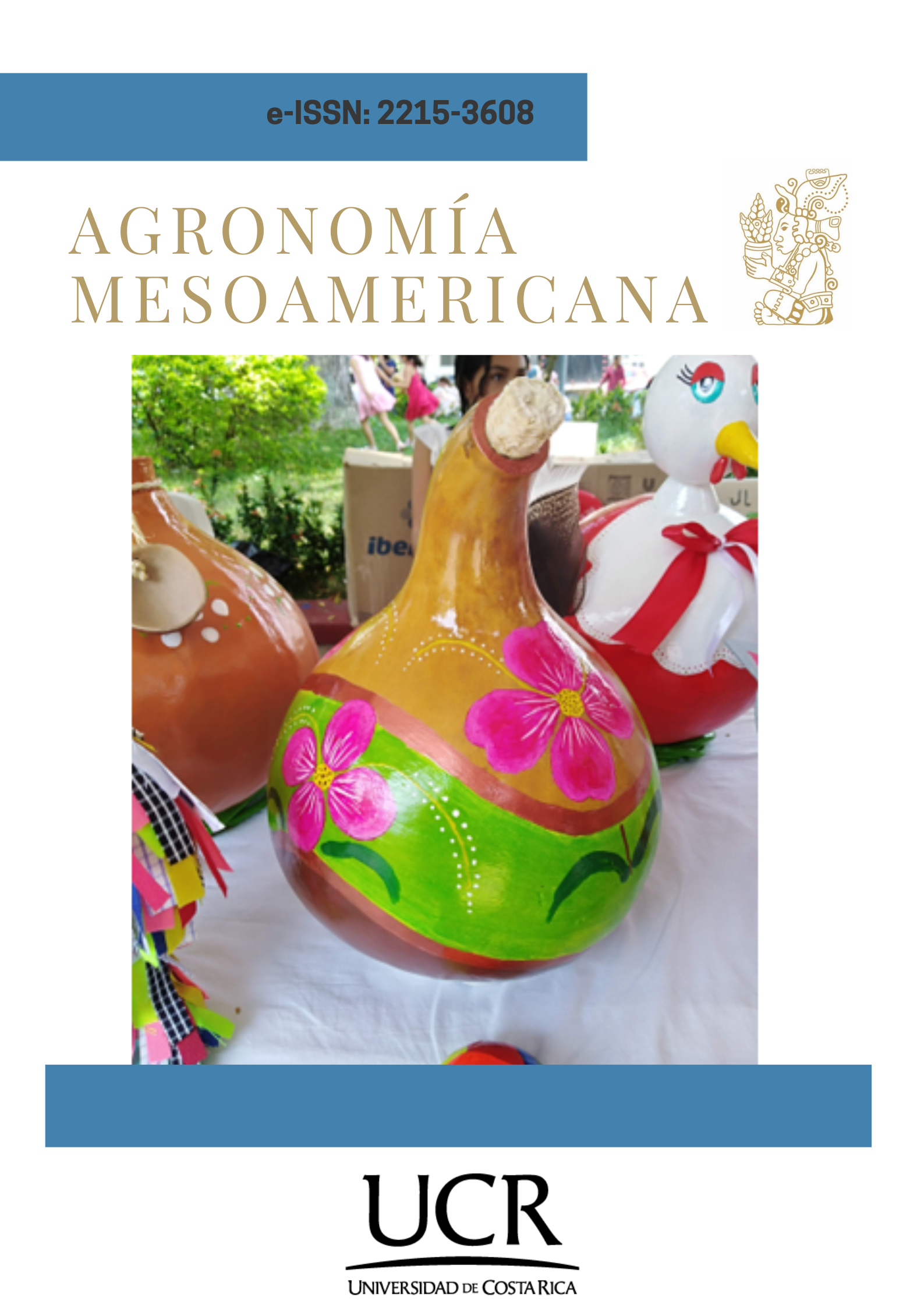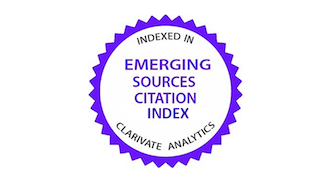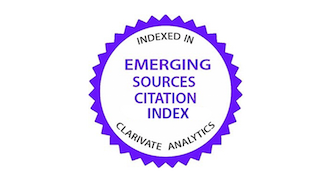Economic valuation of non-timber forest products from the tropical dry forest: Pijao ethnic, Natagaima, Tolima, Colombia
DOI:
https://doi.org/10.15517/am.2025.61822Keywords:
indigenous, bioeconomy, economic benefit, sustainabilityAbstract
Introduction. Non-timber forest products from tropical dry forests offer multiple benefits and are considered an alternative for the sustainable use of forests and the socioeconomic development of local communities. Nevertheless, little is known about their economic value, limiting the visibility and exploitation of their potential and functionality. Objective. To assess the economic benefits of non-timber forest products from tropical dry forest for the Pijao indigenous population of Natagaima, Tolima, Colombia. Materials and methods. This study was carried out in the municipality of Natagaima, Tolima, Colombia, during the first half of 2023. Data were collected through semi-structured interviews with 95 indigenous people from the rural sector, integrating social, ethnobotanical, and economic variables. For the economic evaluation, the costs required for product acquisition (CRAP), gross profit (BBr), and net profit (Bn) were calculated using direct, indirect, and contingent market valuation methods. Results. A total of 570 reports were registered, identifying 66 tropical dry forest species that offer 122 non-timber forest products, distributed in eight categories of use: food, medicinal, forage, oil, construction, domestic, artisanal, and magical-religious. These products generate a total BBr of 15,000 USD/year, with a CRAP of 6,409 USD and a Bn per person of 8,591 USD/year. The categories of medicinal use, food, and forage bring the greatest economic benefits, contributing 79.5 % (6,830.9 USD/year) of the total net income. Conclusions. Non-timber forest products from tropical dry forests provide important socioeconomic benefits to the livelihoods of the ethnic population studied. The most relevant non-timber forest products are considered to be medicines, food, and forage.
Downloads
References
Acevedo-Osorio, Á., & Martínez-Collazos, J. (2016). La agricultura familiar en Colombia. Estudios de caso desde la multifuncionalidad y su aporte a la paz. Universidad Cooperativa de Colombia, Corporación Universitaria Minuto de Dios, & Agrosolidaria. https://ediciones.ucc.edu.co/index.php/ucc/catalog/view/33/35/164
Alcaldía de Natagaima. (2003). Esquema de ordenamiento territorial. Repositorio CDIM. https://repositoriocdim.esap.edu.co/handle/20.500.14471/10469
Araujo Pereira, G., Peixoto Araujo, N. M., Arruda, H. S., De Paulo Farias, D., Molina, G., & Pastore, G. M. (2019). Phytochemicals and biological activities of mutamba (Guazuma ulmifolia Lam.): a review. Food Research International, 126, Article 108713. https://doi.org/10.1016/j.foodres.2019.108713
Araujo Pereira, G., Silva, E. K., Peixoto Araujo, N. M., Arruda, H. S., Meireles, M. A. A., & Pastore, G. M. (2019). Obtaining a novel mucilage from mutamba seeds exploring different high-intensity ultrasound process conditions. Ultrasonics Sonochemistry, 55, 332–340. https://doi.org/10.1016/j.ultsonch.2019.01.010
Aronson, J., Goodwin, N., Orlando, L., Eisenberg, C., & Cross, A. T. (2020). A world of possibilities: six restoration strategies to support the United Nation’s Decade on Ecosystem Restoration. Restoration Ecology, 28(4), 730–736. https://doi.org/10.1111/rec.13170
Assis, R. Q., Andrade, K. L., Gomes Batista, L. E., De Oliveira Rios, A., Ribeiro Dias, D., Ndiaye, E. A., & De Souza, É. C. (2019). Characterization of mutamba (Guazuma ulmifolia LAM.) fruit flour and development of bread. Biocatalysis and Agricultural Biotechnology, 19, Article 101120. https://doi.org/10.1016/j.bcab.2019.101120
Calleros Rodríguez, H. (2022). Investigación cualitativa, pueblos indígenas y procesos políticos. Revista Mexicana de Ciencias Políticas y Sociales, 67(245), 371–394. https://www.revistas.unam.mx/index.php/rmcpys/article/view/75283
Castrillón, F., & García, R. A. (Coord.). (2014). Investigación popular y transformación socioambiental en la región sur y centro del Tolima. Escuela Agroecológica y Territorial Manuel Quintín Lame. https://semillas.org.co/apc-aa-files/5d99b14191c59782eab3da99d8f95126/cartilla-sur-del-tolima-escuela.pdf
Cortes Burgos, M., Méndez Puentes, C. A., Pantevis Suarez, M., & Perez Trujillo, D. F. (2023). Usos de plantas en una comunidad indígena Pijao de Natagaima, Tolima, Colombia. Revista Electrónica EDUCyT, 14, 157–164. https://die.udistrital.edu.co/revistas/index.php/educyt/article/view/285
Cuéllar-Cardozo, J. A., Nossa-Silva, D., & Vallejo, M. I. (2022). Diversidad y estructura florística en zonas riparias de un remanente de bosque seco tropical. Colombia Forestal, 25(2), 70–84. https://doi.org/10.14483/2256201X.19029
Delgado, T. S., McCall, M. K., & López-Binnqüist, C. (2023). Non-timber forest products: small matters, big significance, and the complexity of reaching a workable definition for sustainability. Small-Scale Forestry, 22, 37–68. https://doi.org/10.1007/s11842-022-09517-9
Departamento Administrativo Nacional de Estadística de Colombia. (2022). Información estadística sobre economía cultural y creativa. https://www.dane.gov.co/files/investigaciones/pib/sateli_cultura/economia-naranja/8vo-reporte-economia-cultural-creativa.pdf
Departamento Administrativo Nacional de Estadística de Colombia. (2018). Censo nacional de población y vivienda 2018. https://sitios.dane.gov.co/cnpv/app/views/informacion/fichas/73483.pdf
Dwivedi, S., Sharma, S., Sharma, P. K., Gupta, S. K., & Bhat, M. (2020). Non-timber Forest Products (NTFPs): contribution towards farmers’ economy in North-Western Himalayas. Economic Affairs, 65(4), 675–680. https://ndpublisher.in/admin/issues/EAv65n4z.pdf
Figueroa, J. R. (2005). Valoración de los productos forestales no maderables (PFNM) en la Reserva Forestal Imataca bajo un enfoque de la economía ecológica: caso de estudio Cuenca Alta del río Botanamo, Estado Bolívar, Venezuela [Tesis doctoral, Universidad de la Laguna]. Repositorio Institucional Universidad de la Laguna. https://riull.ull.es/xmlui/handle/915/9850
Flórez Zapata, N. M. V., Murcia López, M. A., Arce Castellanos, L. P., Montoya Castrillón, M., Cordero Ariza, J. J., Santamaría Bueno, A. R., Amaya Guzmán, B., Cortés Gutiérrez, C. A., Rojas Rueda, M. T., Acuña Posada, R. J., Valle Parra, J. S., & Heredia Martín, J. P. (2022). El guáimaro: una oportunidad bioeconómica y regenerativa para el bosque seco tropical y sus comunidades. Instituto de Investigación de Recursos Biológicos Alexander von Humboldt. http://repository.humboldt.org.co/handle/20.500.11761/35976
Fremout, T., Gutiérrez-Miranda, C. E., Briers, S., Marcelo-Peña, J. L., Cueva-Ortiz, E., Linares-Palomino, R., Torre-Cuadros, M. A., Chang-Ruíz, J. C., Villegas-Gómez, T. L., Acosta-Flota, A. H., Plouvier, D., Atkinson, R., Charcape-Ravelo, M., Aguirre-Mendoza, Z., Muys, B., & Thomas, E. (2021). The value of local ecological knowledge to guide tree species selection in tropical dry forest restoration. Restoration Ecology, 29(4), Article e13347. https://doi.org/10.1111/rec.13347
Geilfus, F. (2002). 80 herramientas para el desarrollo participativo: diagnóstico, planificación, monitoreo, evaluación. Instituto Interamericano de Cooperación para la Agricultura.
Heubach, K., Wittig, R., Nuppenau, E.-A., & Hahn, K. (2013). Local values, social differentiation and conservation efforts: the impact of ethnic affiliation on the valuation of NTFP-species in Northern Benin, West Africa. Human Ecology, 41, 513–533. https://doi.org/10.1007/s10745-013-9592-x
Instituto de Hidrología, Meteorología y Estudios Ambientales. (2024). Catálogo Nacional de estaciones. https://www.datos.gov.co/Ambiente-y-Desarrollo-Sostenible/Catalogo-Estaciones-IDEAM/n6vw-vkfe
Kamanga, P., Vedeld, P., & Sjaastad, E. (2009). Forest incomes and rural livelihoods in Chiradzulu District, Malawi. Ecological Economics, 68(3), 613–624. https://doi.org/https://doi.org/10.1016/j.ecolecon.2008.08.018
Kassahun, E., & Taw, T. B. (2022). Willingness to pay for conservation of African Baobab tree in Ethiopia (A case study of Abergele Woreda): Contingent valuation approach. Journal of Sustainable Forestry, 41(2), 212–222. https://doi.org/10.1080/10549811.2021.1903931
Le, H. D., & Nguyen, T. T. K. (2020). The contribution of non-timber forest products to the livelihoods of forest-dependent people: a case study in Hoa Binh province, Vietnam. Forests, Trees and Livelihoods, 29(3), 143–157. https://doi.org/10.1080/14728028.2020.1770131
Lecca, E. R. (2015). Valoración económica ambiental: el problema del costo social. Industrial Data, 18(1), 108-118.
López Camacho, R., & Murcia Orjuela, G. O. (2020). Productos forestales no maderables (PFNM) en Colombia. Universidad Distrital Francisco José de Caldas. https://www.minambiente.gov.co/wp-content/uploads/2022/03/Productos-Forestales-No-Maderables-PFNM-en-Colombia_v.pdf
Luswaga, H., & Nuppenau, E.-A. (2022). Non-timber forest products income and inequality status for communities around West Usambara Mountain Forests in Tanzania. Environment, Development and Sustainability, 24(10), 11651–11675. https://doi.org/10.1007/s10668-021-01914-y
Magry, M. A., Cahill, D., Rookes, J., & Narula, S. A. (2022). An integrated value chain analysis of non-timber forest products: a case of jharkhand state of India. Small-Scale Forestry, 21, 621–645. https://doi.org/10.1007/s11842-022-09520-0
Mendoza Hernandez, A. H., Niño Hernández, M. Á., Chaloupková, P., & Fernández-Cusimamani, E. (2021). Ethnobotanical study of the use of medicinal plants in the indigenous Pijao community in Natagaima, Colombia. Boletín Latinoamericano y del Caribe de Plantas Medicinales y Aromáticas, 20(5), 482–495. https://doi.org/10.37360/blacpma.21.20.5.35
Ministerio de Ambiente y Desarrollo Sostenible de Colombia. (2018). Guía de aplicación de la valoración económica ambiental. https://archivo.minambiente.gov.co/index.php/valoracion-economica-ambiental
Ministerio de Ambiente y Desarrollo Sostenible de Colombia. (2021). Programa Nacional para la Conservación y Restauración del Bosque Seco Tropical en Colombia: Plan de acción 2020-2030. https://archivo.minambiente.gov.co/images/BosquesBiodiversidadyServiciosEcosistemicos/pdf/Zonas-secas/programa_bosque_seco_tropical_en_colombia.pdf
Ministerio de Salud y Protección Social de Colombia. (2019). Informe final de la implementación del Plan Nacional de Seguridad Alimentaria y Nutricional, 2012-2019. https://www.minsalud.gov.co/sites/rid/Lists/BibliotecaDigital/RIDE/VS/PP/SSNAB/informe-final-implementacion-plan-nacional-seguridad-alimentaria-2012-2019.pdf
Morais, S. M., Calixto-Júnior, J. T., Ribeiro, L. M., Sousa, A. A. S., Silva, A. A. S., Figueiredo, F. G., Matias, E. F. F., Boligon, A. A., Athayde, L. M., Morais-Braga, M. F. B., & Countinho, H. D. M. (2017). Phenolic composition and antioxidant, anticholinesterase and antibiotic-modulating antifungal activities of Guazuma ulmifolia Lam. (Malvaceae) ethanol extract. South African Journal of Botany, 110, 251–257. https://doi.org/10.1016/j.sajb.2016.08.003
Moussa, A. Y., Siddiqui, S. A., Elhawary, E. A., Guo, K., Anwar, S., & Xu, B. (2024). Phytochemical constituents, bioactivities, and applications of custard apple (Annona squamosa L.): a narrative review. Food Chemistry, 459, Article 140363. https://doi.org/10.1016/j.foodchem.2024.140363
Musa, F. I., Sahoo, U. K., Eltahir, M. E. S., Abdel Magid, T. D., Adlan, O. E., Abdelrhman, H. A., & Abdelkarim, A. A. (2023). Contribution of non-wood forest products for household income in rural area of Sudan – A review. Journal of Agriculture and Food Research, 14, Article 100801. https://doi.org/10.1016/j.jafr.2023.100801
Norden, N., González-M., R., Avella-M., A., Salgado-Negret, B., Alcázar, C., Rodríguez-Buriticá, S., Aguilar-Cano, J., Castellanos-Castro, C., Calderón, J. J., Caycedo-Rosales, P., Cuadros, H., Díaz-Pulido, A., Fajardo, Z., Franke-Ante, R., García, D. H., González, M. A., Hernández-Jaramillo, A., Idárraga-Piedrahita, Á., López-Camacho, R., … García, H. (2021). Building a socio-ecological monitoring platform for the comprehensive management of tropical dry forests. Plants, People, Planet, 3(3), 238–248. https://doi.org/10.1002/ppp3.10113
Ortiz Gordillo, A. F., Villalba Yate, D. I., Guzmán, J. J., Guzmán Yate, A. M., Villalba Yate, I., Villalba Yate, I. Y., Patiño Flores, P., Cespedes, N., & Torres, J. E. (2023). “Ahí está la diferencia, en el joke…”: el joke Pijao como actante en el proceso de recuperación de Ima. Boletim do Museu Paraense Emílio Goeldi. Ciências Humanas, 18(2), Artículo e20220062. https://doi.org/10.1590/2178-2547-BGOELDI-2022-0062
Palacios Zapata, C. M., Charcape Ravelo, J. M., & Mostacero León, J. (2017). Valoración económica ambiental de las plantas medicinales de la zona de influencia de tres lagunas en Huancabamba – Piura. INDES Revista de Investigación Para El Desarrollo Sustentable, 3(2), Artículo 16. https://doi.org/10.25127/indes.201502.002
Pardo Rozo, Y. Y., Muñoz Ramos, J., & Velásquez Restrepo, J. E. (2022). Valoración económica de servicios ecosistémicos en bosques de sistemas agropecuarios del piedemonte amazónico colombiano. Desarrollo y Sociedad, 1(91), 143–169. https://doi.org/10.13043/DYS.91.4
Partida Hernández, M., Loya-Olguin, J. L., Gómez Gurrola, A., Ramírez Ramírez, J. C., Hernández Ballesteros, J. A., Amezcua-Jaeger, T., Escalera Valente, F., & Sanginés García, L. (2019). Reemplazo de grano de sorgo con fruto de Guazuma ulmifolia en dietas de corderos con diferente forraje. Ecosistemas y Recursos Agropecuarios, 6(17), 253–262. https://doi.org/10.19136/era.a6n17.1613
Peralta-Kulik, N., Amarilla Rodríguez, S. M., Pérez de Molas, L., & González Villalba, J. (2023). Approaches to the economic valuation of non-timber products from the Alto Paraná Atlantic forests, Paraguay. Revista Chapingo Serie Ciencias Forestales y del Ambiente, 29(3), 61–76. https://doi.org/10.5154/r.rchscfa.2022.12.085
Pérez-Sánchez, D., Montes, M., Cardona-Almeida, C., Vargas-Marín, L. A., Enríquez-Acevedo, T., & Suarez, A. (2021). Keeping people in the loop: Socioeconomic valuation of dry forest ecosystem services in the Colombian Caribbean region. Journal of Arid Environments, 188, Article 104446. https://doi.org/10.1016/j.jaridenv.2021.104446
Quiroga-C, J. A., Roa-R, H. Y., Melo, O., & Fernandez-M, F. (2019). Estructura de fragmentos de bosque seco tropical en el sur del departamento del Tolima, Colombia. Boletín Científico Centro de Museos Museo de Historia Natural, 23(1), 31–51. https://doi.org/10.17151/bccm.2019.23.1.2
Riascos, J. C., Acosta, L. F, & Ortiz, M. I. (2020). Economía naranja y la actividad artesanal en Colombia y Nariño: una breve revisión analítica. Tendencias, 21(2), 218–241. https://doi.org/10.22267/rtend.202102.148
Ripka de Almeida, A., Da Silva, C. L., & Hernández Santoyo, A. (2018). Métodos de valoración económica ambiental: instrumentos para el desarrollo de políticas ambientales. Revista Universidad y Sociedad, 10(4), 246–255.
Robinson, J. M., Gellie, N., MacCarthy, D., Mills, J. G., O’Donnell, K., & Redvers, N. (2021). Traditional ecological knowledge in restoration ecology: a call to listen deeply, to engage with, and respect Indigenous voices. Restoration Ecology, 29(4), Article e13381. https://doi.org/10.1111/rec.13381
Rodríguez Rodríguez, L. J. (2023). Etnoecología de la flora de uso tradicional en el municipio de Coyaima, Tolima [Tesis de maestría, Universidad del Tolima]. Repositorio Institucional de la Universidad del Tolima. https://repository.ut.edu.co/entities/publication/7417da17-885c-42c8-80df-9a70a26f0082
Rout, B. (2023). Relationship between the value of forest products and economic condition: a case study of Gandhamardan hill Odisha, India. SN Business & Economics, 3, Article 182. https://doi.org/10.1007/s43546-023-00560-y
Samdin, Z., Kamaruddin, N., & Razali, S. M. (2023). Tropical forest ecosystem services in improving livelihoods for local communities. In Z. Samdin, N. Kamaruddin, & S. M. Razali (Eds.), Tropical forest ecosystem services in improving livelihoods for local communities (pp. 29–44). Springer. https://doi.org/10.1007/978-981-19-3342-4_3
Sánchez-Jiménez, W., Panesso-Jiménez, F., Nieto-Gómez, L. E., Cabrera-Otálora, M. I., & Giraldo-Díaz, R. (2020). Significaciones mágicas e ilusiógenas del tabaco en los pueblos milenarios de América. Libre Empresa, 17(1), 116–127. https://doi.org/10.18041/1657-2815/libreempresa.2020v17n1.7306
Singh, S. (2003). Advanced sampling theory with applications. Springer. https://doi.org/10.1007/978-94-007-0789-4
Soledispa Rodríguez, X. E., Vásquez Chancay, C. E., & Chilán Regalado, M. L. (2021). La comercialización de artesanías como un medio de generación de ingresos: caso comerciantes de la parroquia la Pila del cantón Montecristi. Revista Publicando, 8(31), 338–350. https://doi.org/10.51528/rp.vol8.id2254
Soman, D., Anitha, V., Viswanath, S., & Sreeraj, M. (2025). From cognition to economic valuation of cultural ecosystem services – An evidence from Parambikulam tiger reserve, Kerala. Journal for Nature Conservation, 84, Article 126828. https://doi.org/10.1016/j.jnc.2025.126828
Suleiman, M. S., Wasonga, V. O., Mbau, J. S., Suleiman, A., & Elhadi, Y. A. (2017). Non-timber forest products and their contribution to households income around Falgore Game Reserve in Kano, Nigeria. Ecological Processes, 6(1), Article 23. https://doi.org/10.1186/s13717-017-0090-8
Tarbox, B. C., Swisher, M., Calle, Z., Wilson, C. H., & Flory, S. L. (2020). Decline in local ecological knowledge in the Colombian Andes may constrain silvopastoral tree diversity. Restoration Ecology, 28(4), 892–901. https://doi.org/10.1111/rec.13153
Turner, N. J., Cuerrier, A., & Joseph, L. (2022). Well grounded: indigenous peoples’ knowledge, ethnobiology and sustainability. People and Nature, 4(3), 627–651. https://doi.org/10.1002/pan3.10321
Vang Rasmussen, L., Watkins, C., & Agrawal, A. (2017). Forest contributions to livelihoods in changing agriculture-forest landscapes. Forest Policy and Economics, 84, 1–8. https://doi.org/10.1016/j.forpol.2017.04.010
Velásquez Arango, J. J. (2021). Nuevas perspectivas para la historia del pueblo pijao, siglos XVI y XVII. Fronteras de la Historia, 26(1), 256–279. https://doi.org/10.22380/20274688.1125
Wahlén, C. B. (2017). Opportunities for making the invisible visible: Towards an improved understanding of the economic contributions of NTFPs. Forest Policy and Economics, 84, 11–19. https://doi.org/10.1016/j.forpol.2017.04.006
Wilson, J., Goldson-Barnaby, A., & Bailey, D. (2019). Melicoccus Bijugatus (guinep): phytochemical properties, associated health benefits and commercial applications. International Journal of Fruit Science, 20(4), 659–666. https://doi.org/10.1080/15538362.2019.1669517

Additional Files
Published
License

This work is licensed under a Creative Commons Attribution-NonCommercial-NoDerivatives 4.0 International License.
1. Proposed policy for open access journals
Authors who publish in this journal accept the following conditions:
a. Authors retain the copyright and assign to the journal the right to the first publication, with the work registered under the attribution, non-commercial and no-derivative license from Creative Commons, which allows third parties to use what has been published as long as they mention the authorship of the work and upon first publication in this journal, the work may not be used for commercial purposes and the publications may not be used to remix, transform or create another work.
b. Authors may enter into additional independent contractual arrangements for the non-exclusive distribution of the version of the article published in this journal (e.g., including it in an institutional repository or publishing it in a book) provided that they clearly indicate that the work was first published in this journal.
c. Authors are permitted and encouraged to publish their work on the Internet (e.g. on institutional or personal pages) before and during the review and publication process, as it may lead to productive exchanges and faster and wider dissemination of published work (see The Effect of Open Access).






























